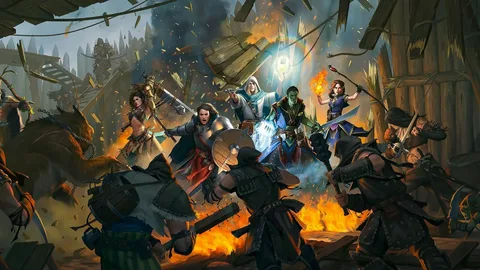The Mislead spell in Dungeons & Dragons 5th Edition (5e) is a powerful illusion spell that allows a caster to simultaneously vanish and create a double, leading enemies astray and providing ample opportunities for clever gameplay. While it may not be the most straightforward spell in a wizard or bard’s arsenal, its potential for deception and strategic advantage is immense. In this post, we will delve into the history of the 5e Mislead spell, explore its mechanics, and discuss some of the best ways to use it effectively in your campaign.
Understanding the History of the 5e Mislead Spell
Origins of the Mislead Spell

The Mislead spell has roots deep in the history of Dungeons & Dragons, first appearing in earlier editions before making its way into 5e. Its design reflects the classic themes of illusion and trickery, which have always been a part of the game. Mislead has evolved over the years, maintaining its status as a spell that rewards creativity and tactical thinking. While the core concept has remained consistent, the specifics have been refined in 5e to suit the streamlined mechanics of the edition.
The Role of Illusion in Dungeons & Dragons
Illusion spells have always played a unique role in Dungeons & Dragons, offering players a chance to manipulate the perception of others. Unlike direct damage spells, illusions like Mislead require players to think on their feet, using the environment and situation to their advantage. This spell exemplifies the cunning and craftiness that illusionists bring to the table, making it a favorite for those who prefer guile over brute force.
Mechanics of the 5e Mislead Spell
How the 5e Mislead Spell Works
At its core, the 5e Mislead spell allows a caster to create an illusory double of themselves while becoming invisible. The spell is available to wizards and bards at the 5th level and requires concentration to maintain. Upon casting, the caster disappears from sight and an illusionary duplicate appears in their place. This double can move, speak, and act as the caster directs, while the caster themselves remains hidden and free to take other actions.
Key Details and Limitations
The 5e Mislead spell has several important details to consider. First, the illusion created by the spell is perfect in appearance but cannot physically interact with the world—it’s purely visual and auditory. Second, while the caster is invisible, they can still be detected by means other than sight, such as sound or smell, and attacking or casting another spell will end the invisibility. Concentration is required to maintain the spell, meaning the caster must avoid taking damage or risk losing the effect.
Best Uses of the 5e Mislead Spell
Strategic Combat Applications

1. Disorienting Enemies
One of the primary uses of the 5e Mislead spell is to disorient and confuse enemies. By creating an illusory double, the caster can draw attention away from themselves, leading opponents into traps or misdirecting them during a critical moment in battle. This tactic can buy valuable time for the party to regroup, reposition, or prepare a counterattack.
2. Setting Up Ambushes
The Mislead spell is also highly effective for setting up ambushes. The caster can use the illusory double to lure enemies into a specific location, while the real party lies in wait. Once the enemies are in position, the party can strike from an advantageous angle, catching their foes off guard and potentially turning the tide of the encounter.
Non-Combat and Roleplaying Scenarios

3. Infiltration and Espionage
Beyond combat, the Mislead spell shines in scenarios involving infiltration and espionage. The caster can use the illusion to impersonate themselves while sneaking into restricted areas or eavesdropping on important conversations. The double can engage in mundane activities, drawing attention away from the caster’s true actions, making it ideal for heists or gathering intelligence.
4. Deception and Misdirection
The 5e Mislead spell is an excellent tool for deception. For instance, the caster can use the illusion to lead pursuers in the wrong direction while they escape or set up a false dialogue to trick enemies into revealing information. The possibilities are nearly endless, limited only by the caster’s creativity and the scenario at hand.
Combining Mislead with Other Spells
5. Pairing with Invisibility or Greater Invisibility
While Mislead already grants invisibility, it can be paired with other spells like Greater Invisibility for enhanced stealth. By casting Greater Invisibility first, the caster can act without breaking invisibility, allowing them to maintain the Mislead spell’s effects while attacking or casting additional spells.
6. Creating Illusory Layers with Minor Illusion
Pairing Mislead with Minor Illusion can create complex layers of deception. For example, the caster can use Minor Illusion to generate sound effects or additional visual elements that enhance the believability of the illusory double. This tactic can be particularly effective in larger or more chaotic encounters where multiple distractions are needed.
Final Words
The Mislead spell in 5e is a versatile and powerful tool for any illusionist. Its unique combination of invisibility and illusion allows for a wide range of strategic and creative uses, both in and out of combat. Understanding the history and mechanics of the 5e Mislead spell, as well as exploring its best uses, can unlock its full potential and add a new dimension to your Dungeons & Dragons gameplay. Whether you’re disorienting enemies, setting up ambushes, or engaging in espionage, the Mislead spell offers endless opportunities for those willing to think outside the box.
